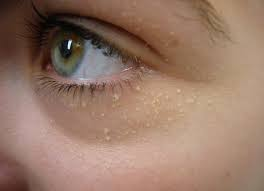Is DIY Milia Removal Safe?
Milia are tiny, white or yellowish cysts that often appear on the face, especially around the eyes, cheeks, and nose. Though they are harmless, their stubborn presence can be frustrating for many people seeking clear, smooth skin. While professional treatments are widely recommended, some individuals explore do-it-yourself (DIY) solutions at home. It’s important to understand the safety concerns, potential risks, and what skin experts say about at-home milia extraction. In the CENTER of this conversation is a rising trend of Milia Treatments in Dubai, where residents are increasingly prioritizing safe and effective skincare guided by dermatological professionals.
What Makes Milia Different?
Not Just Pimples or Whiteheads
Milia are not caused by bacteria or clogged pores like traditional acne. Instead, they form when keratin (a skin protein) becomes trapped beneath the surface of the skin. These tiny cysts are firm and don’t usually go away on their own quickly. Unlike blackheads or pimples, they don’t have an opening, making them difficult to remove without the right technique or tools.
Common Causes of Milia
-
Use of heavy skincare products
-
Sun damage
-
Skin trauma (like burns or rashes)
-
Genetic predisposition
-
Aging and skin cell turnover slowdown
The Risks of DIY Milia Removal
Damage to Delicate Skin
Attempting to extract milia at home can cause trauma to the skin. The eye area, in particular, is very sensitive. Using needles, pins, or comedone extractors without proper sterilization or skill can lead to cuts, bruising, and long-term skin damage.
Infection Risk
Breaking the skin barrier at home increases the chances of introducing bacteria. If tools are not sterilized or hands are not clean, infections can occur. These infections may leave scars or lead to more serious skin conditions that require medical attention.
Scarring and Hyperpigmentation
One of the most common complications of DIY milia removal is scarring. Since milia often appear in delicate areas, any injury can result in hyperpigmentation or permanent textural changes.
Why Dermatologists Advise Against DIY Methods
Milia Require Precision
A dermatologist has the necessary tools and experience to remove milia safely and hygienically. They use sterile equipment and a controlled environment to reduce the risk of complications. Moreover, dermatologists can also identify whether the bumps are milia or another condition that mimics their appearance.
Tailored Treatment Plans
In a professional setting, treatment plans may include:
-
Manual extraction by a dermatologist
-
Topical retinoids to promote skin turnover
-
Laser or cryotherapy in severe cases
-
Chemical peels to remove surface layers gently
These treatments are designed to treat existing milia and prevent future ones.
Final Thoughts
DIY milia removal might seem like a quick fix, but the potential damage to your skin isn’t worth the risk. Safe, hygienic, and effective solutions are available through professional care. The growing demand for Milia Treatments Dubai reflects a shift toward professional, dermatologist-led skincare practices that protect and enhance the skin long-term. Whether you're dealing with one stubborn bump or a cluster, seeking expert advice is the safest and most effective way forward.




Comments
Post a Comment